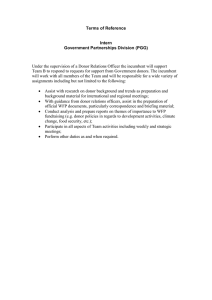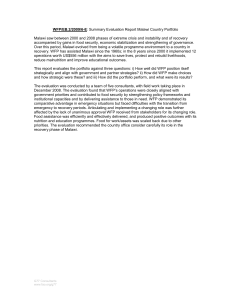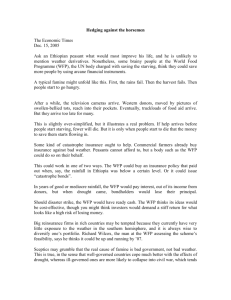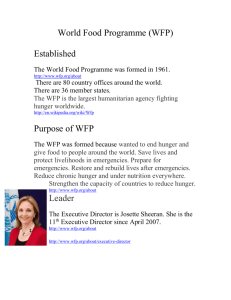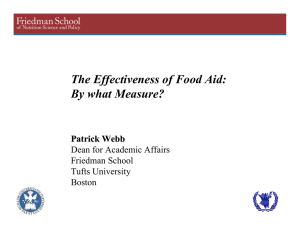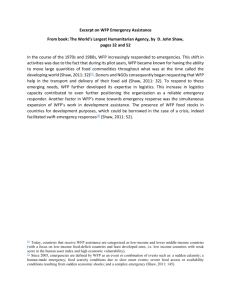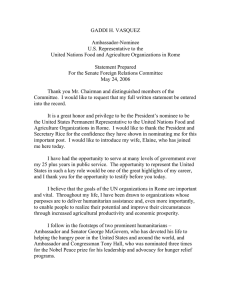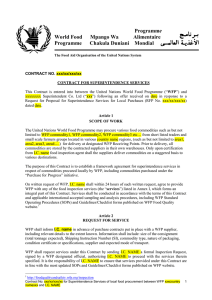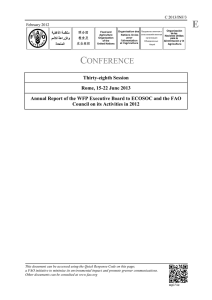United Nations World Food Programme
advertisement
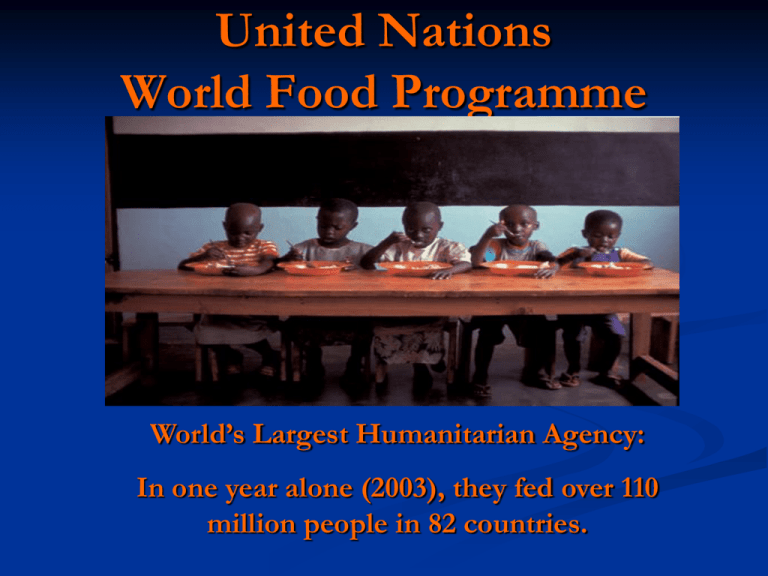
United Nations World Food Programme World’s Largest Humanitarian Agency: In one year alone (2003), they fed over 110 million people in 82 countries. World Food Programme What is the WFP? 1. 2. 3. WFP is the world’s largest humanitarian organization WFP is the food aid agency of the United Nations. WFP also = We Feed People Operations of WFP WFP Food reaches people through three different kinds of operations: 1. Emergency Ops: WFP provides fast and efficient relief to millions of people that are victims of natural or man-made disasters. (i.e. SouthEast Asia Tsunami, Mugabe regime in Zimbabwe, militia wars in Sierra Leone) 2. Long-term and Recovery Ops: During humanitarian crises triggered by armed conflict and climate conditions (drought or floods) consequences on people often persist for many years causing undernutrition. WFP uses food to help communities re-build their human capital. (i.e. FFW in North Korea) 3. Development Programmes: In collaboration with other UN agencies help re-built infrastructures in the community and provide education such as basic reading and writing skills, and farming and agricultural techniques to improve production of produce, cattle, etc. Some examples are: WFF: Work for Food School Feeding FFT: Food for training Mother child nutrition and health HIV/AIDS prevention and treatment programmes School Feeding • WFP works with schools, local and national governments, donors and aid groups to use food to attract children to school. • WFP works to make the school feeding project self-sustaining. Thus far, 20 countries have taken full responsibility for school feeding. • It only costs WFP 19 cents a day to feed a child in school. Funding Sources for WFP Governments Make up 98% of WFP’s donor base Can be donors, recipients, or transitional (i.e. Colombia) Private (Only 2% of WFP’s donor base) Individuals Companies and Corporations High Network individuals WFP faces several challenges Increase in price of commodity products such as beans, wheat, and grains due to rising global population, more frequent floods and droughts caused by climate change; and the bio-fuel industry's appetite for grains. Increase in price of fuels, increases operating cost to deliver food Due to political instability, ethnic wars, the increase of natural disasters the number of beneficiaries has increased substantially while donations from governments have decreased Exchange rate loss of dollar versus Euro Summer 2007: What I did! What I 1. 2. 3. 4. 5. Research prospect donors Write donor compatibility reports Help develop guidelines Work on developing new partnerships. Develop MKTG messages Assist in acct. management What It Did for me! •Ticket to Rome = € 726 ($1,000 USD) •Room and Board = € 2, 177 ($3,000USD) •Improving my interpersonal and communication skills, working in a multicultural environment, adding nice line to my Resume, and knowing I can make a difference = Priceless
